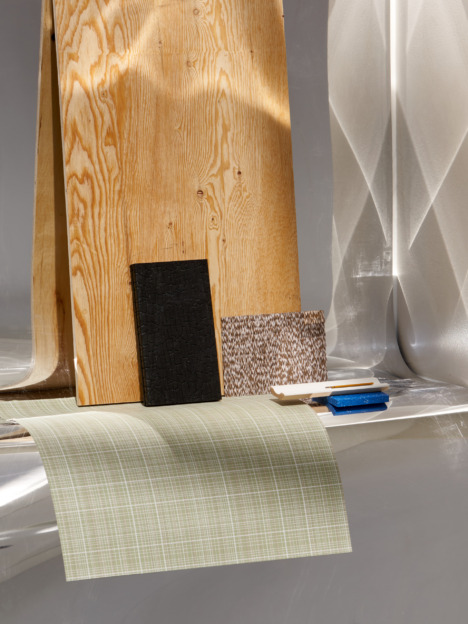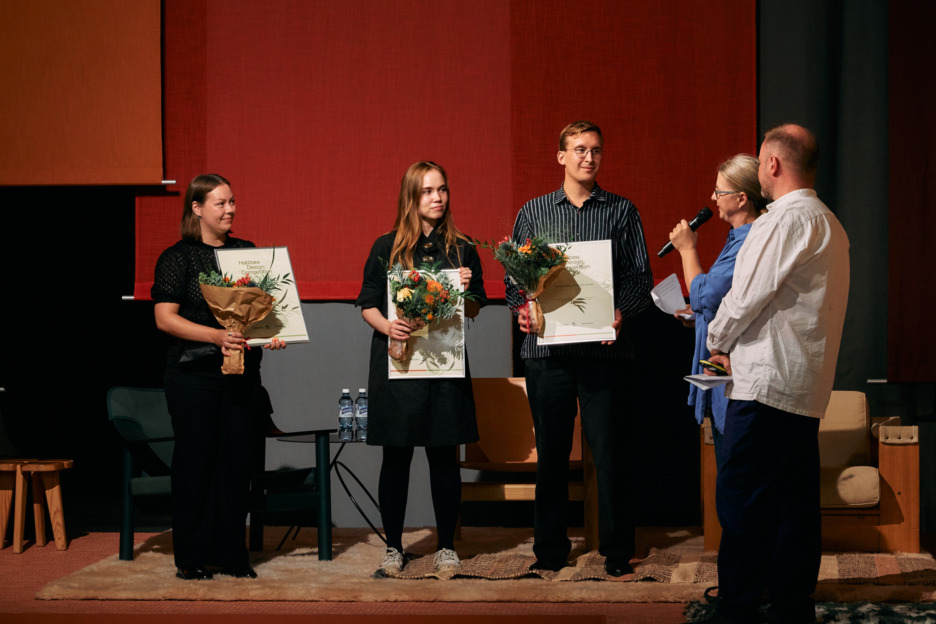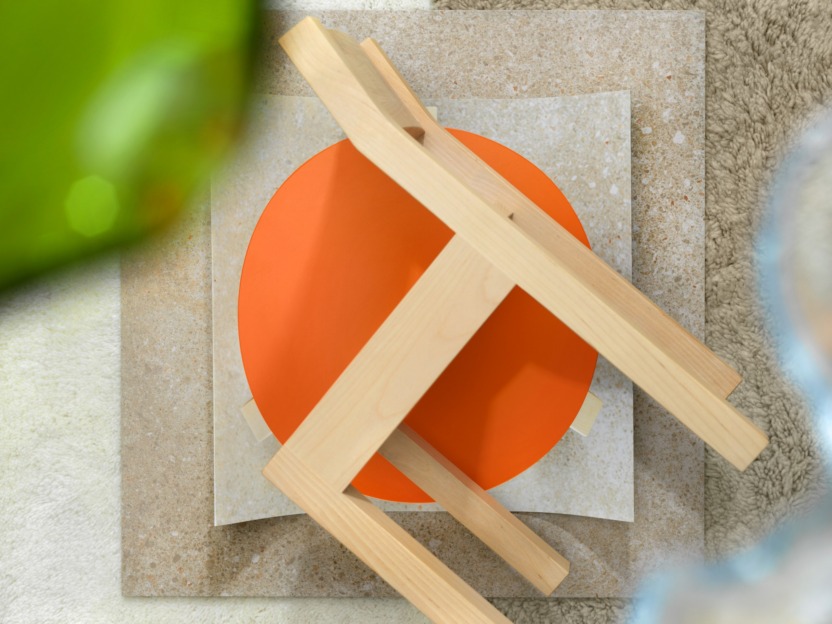Nemo architects, creators of Habitare Materials: “We should all learn to tolerate imperfection and incompleteness in our environment”

Habitare Materials shows the direction in which materials are heading. Maria Klemetti Laine and Jussi Laine of Nemo architects, who designed and curated the material library, believe in respecting the layered nature of spaces and highlighting old. The new and revised Habitare Materials will be featured at Habitare from 11 to 15 September 2024.
Letting old show through and respecting layeredness comes naturally to you as designers. Why is that?
Maria: We all come from somewhere, and places and materials have their history. If we take away history, that leaves us with no context. This does not produce a soulful and meaningful environment. Various layers of time enrich space, as they keep us aware of history and prevent it from being erased from our minds. We live in a continuum – including when it comes to space.
Jussi: Having many layers on top of each other creates depth. If the layers are taken out, only one surface remains. Our aim is to use Habitare Materials to spark a broader discussion about materials and their value. The concept was created to make us stop and look at materials. All materials have value, and they all have a story to tell. It is a major undertaking for companies to produce interior decoration or construction materials. The reasons why a material is produced are deeply rooted. New and old materials speak about the cultural context in which they were created.
Maria: Old material also has material value. If it has been in a place for, say, fifty years, it has been part of the lives of the people who have used it, taking on a patina and becoming worn in step with the people. This is a value to be cherished, whenever possible.
Jussi: I think it’s great that we talk about carbon footprints and carbon pools, because it also makes us think about how much energy is bound in materials that have already been produced. The more built the environment is, and the more details it has, the more energy and resource-intensive it is. If you think about an urban space, for example, it is a kind of densification.
How can materials from different eras live in aesthetic harmony?
Maria: That is the salt and heart of everything; it is what makes the layered character interesting. If there are new materials from the hardware shop everywhere, it can be aesthetically beautiful, but the end result is quite shallow, just a surface. Combining new things with something old, worn and patinated – which may have been cared for, repaired, renewed and painted over – forms layers of eras and cultures. This is what makes a space interesting and soulful.
New layers have also been introduced into the Habitare Materials exhibition design. What are these like?
Jussi: This year, Habitare Materials will be more spatial than it was last year. There will be rooms that feature larger pieces of materials, both hanging and fixed. This will add an element of a spatial collage to the exhibition.
Maria: The stand design will live and breathe the message of the concept. The design will have something of a construction site feel to it. It will feature incomplete and unfinished things.
Combining new things with something old, worn and patinated – which may have been cared for, repaired, renewed and painted over – forms layers of eras and cultures.
Nemo architects Maria Klemetti Laine and Jussi Laine
Topical material tips by Nemo architects:
- Imperfect materials
We are in the process of renovating our own home. The flat has been uninhabited for fifty years, and it contains really old materials that are still in use. Cherishing the old and seeing imperfection as beautiful has been acutely on our minds recently. We should all learn to tolerate imperfection and incompleteness in our environment. Natural stone and colour experiments with self-made paints are good examples of imperfect materials.
2. Self-made paints
We have made our own paints. It may sound pretty hard core, but in the end, it’s pretty simple, easy, really surprising, and economical. By using three simple ingredients – pigment, bone glue, or the vegan option of pulp glue, and chalk – you can make the types of paints you like. These have been used in paints for centuries, and there’s an element of surprise and imperfection to them.
3. Paper
We believe that wallpapers currently have the same kind of opportunity as the paint industry had previously. Wallpapersare easy and quick to hang. You can view instructions on YouTube, and tolerate the little imperfection that goes with it. We’ve used wood in interior decoration for a really long time. Paper represents the same Finnish wood industry and continues the same story. It’s just processed further.
The companies participating in Habitare Materials:
Bjelin l BOLON l Cent-listat l Corian® Neolith® PaperStone® l Durat l Ewona l Formica IKI I KOIVUI l Maricken l Nerostein l Nordstock l NOVENBERG l Tapettitehdas Pihlgren & Ritola I Tarkett l Tulikivi l Wienerberger l Vink Finland l VM Carpet l Woodnotes
Each day, the Habitare Materials stand will display collages made by guests, on Wednesday and Thursday at 13:00 and on Friday to Sunday at noon.
More information:
Pia Sievinen, communication & brand, Habitare, tel. +358 40 559 9155, pia.sievinen@messukeskus.com
Accreditation: https://www.messukeskus.com/medialle/akkreditointi/
Image Bank: https://mediabank.messukeskus.com/kuvat/Habitare/
Habitare, the leading furniture, design and interiors event in the Nordics, will be held at the Helsinki Expo and Convention Centre from 11 to 15 September 2024.| habitare.fi | | @habitarefair | #habitare2024




